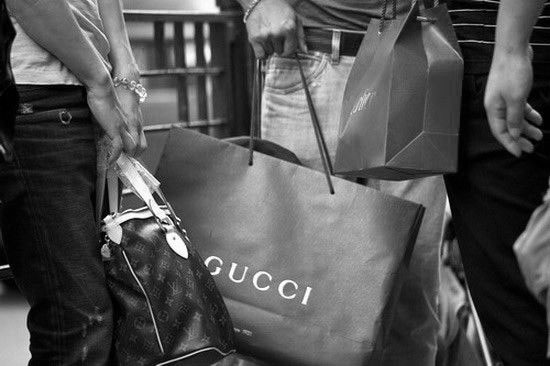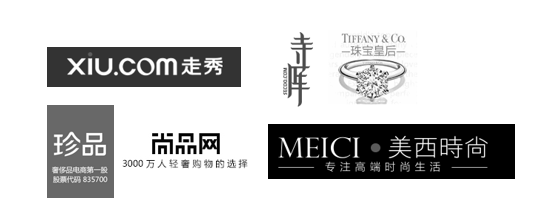A Middle-Class
Force Awakens
Chinese consumer patterns are changing rapidly, luxury needs to keep up
SmithStreet Founder and Co-partner, Franklin Yao, wrote an article for the German Chamber of Commerce focused on China’s emerging middle class and their impact on the luxury/retail market. These are excerpts from the article presenting some of the key takeaways.
Five years ago, we would hear stories about the young, entry-level office receptionist working at a multinational in Shanghai who would save up three months of her salary in order to purchase a Louis Vuitton bag. Those days are long gone, and we now have to understand a new normal for the marketplace for luxury goods in China.
- Chinese consumer spending is no longer driven by the elite or top 1%
- The upper middleclass consumer is not spending irrationally like before
Nowadays, there is no longer the desire to invest in that LV bag because it means having to forgo watching IMAX movies, eating at Ippudo Ramen, participating in an exercise class or flying to Hokkaido for cherry blossom season.
In other words, the new middle-class has a broader set of spending choices today that need to be satisfied before moving into spending on true luxury products.
China’s Move to a Normal Luxury Market; the Biggest in the World
Although these shifts are taking place this middle-class consumer may soon be ready to spend on luxury again. If you want proof of the desire to upgrade in China just look at the continual expansion of Starbucks versus the decline of KFC. In fact, China has the second most millionaires in the world with figures in a 2014 Boston Consulting Group Global Wealth Report listing 2.4mn, trailing the US number of 7.1mn. Another report by AliResearch and BCG pegs the number of upper middle class and affluent households (annual disposable income over USD24,000) to double to a whopping 100mn between 2015 and 2020. So we can see that the consumer market for luxury products exists and is going to increase.
In 2014 SmithStreet conducted a study for a major luxury conglomerate going into 300 luxury consumer wardrobes across 13 cities in China and talking to luxury spenders on store service, discovering that store service was really great if you were recognized by that store manager as a VIP. If not, you generally received unsatisfactory store service, and this was more pronounced when compared to travelers who have experienced store service abroad.
The Sky has Fallen
Why were we ever in a world where an entry-level office worker was so willing to spend a disproportionate amount on luxury?
I think we can argue about cultural reasons including:
- The importance of face
- Displays of wealth as a signifier of trust
- Gift-giving culture
Another way to look at it is that the entire consumption economy was geared toward an elite group of spenders (we can consider this the Top 0.01%).
- This group has not been doing very well lately. It has been an economy that has been driven by a very small elite and the trickle down effects of this elite consumption.
- The elite have included government officials and the class that works with them , factory owners who export to foreign markets, real estate developers and entrepreneurs with easy access to capital.
What we have seen in the last two years is a Chinese economy where these old-economy drivers of growth have largely dissipated, and may never again be the key growth drivers in the economy again. From the perspective of hindsight, we will look back at retail luxury market as something of a naive and strange phenomenon.
Why Luxury Retailers are Failing
In 2014 SmithStreet conducted a study for a major luxury conglomerate going into 300 luxury consumer wardrobes across 13 cities in China and talking to luxury spenders on store service, discovering that store service was really great if you were recognized by that store manager as a VIP. If not, you generally received unsatisfactory store service, and this was more pronounced when compared to travelers who have experienced store service abroad.
Another way to think about the previous abnormality of the market is that:
- Luxury products flew off the shelves despite a lack of luxury buying experience
- Luxury goods sold themselves
- Chinese consumers, for a time, were willing to pay more for the same good
As part of a pricing study for a leading American women’s wear brand, a comparison of over 500 SKUs across different brands and categories was built and found that on average the China price was 68% higher for the equivalent product in the US. Fortunately for the consumer, and unfortunately for retailers, the emergence of easy travel and the ecommerce phenomenon spearheaded by Alibaba has made disparate pricing impossible, we have to appreciate the Taobao network (which includes TMall) for what it is: an exchange where sellers can take all the world’s products to one fifth of the world’s consumers with complete market information.
We also have to rethink what the daigou (代购) or “shopping agent” market is in China. With a daigou, a luxury consumer in China gets a personal shopper that is always accessible through their smartphones, they know what you previously bought and therefore your shopping preferences, they are a friend who is responsive to personal and commerce conversations that you need to have, and they are someone who is able to curate, explain and introduce you to new products and brands that you do not yet know about. Would you not expect this experience when you are looking to buy a luxury product? Retailers are not able to provide this right now.
And they are stuck with an expensive and extensive physical store network.
Gucci recently displayed an exhibit in Shanghai to introduce the influences of Alexander Michele, its critically well-received new designer. The gallery was well-curated and took me through the playful world-view of Alessandro Michele and the work that he is doing at Gucci and put it in context, without directly commercializing the brand. This would be apparent to anybody paying attention carefully.
WeChat Omni-Social with Service Based on Trust
Gucci recently displayed an exhibit in Shanghai to introduce the influences of Alexander Michele, its critically well-received new designer. The gallery was well-curated and took me through the playful world-view of Alessandro Michele and the work that he is doing at Gucci and put it in context, without directly commercializing the brand. This would be apparent to anybody paying attention carefully. Very few were, instead most participants were too busy working with their friends to take photos within the exhibit and sharing those results on their WeChat Moments. Unintended, this is even better for the brand as it is the potential customers promoting Gucci on its behalf. This is part of the challenge in today’s world of marketing, first to even give personalized messaging to the customer, but second to create a platform where customers can create their own experiences with a brand. All the tools are out there it just takes a change in the mindset of brands. In the current mindset, WeChat is used as another channel to deliver content; but if I am a loyal Gucci customer who understands the brand and has purchased a wide range of products, I get the same message as an aspiring consumer who is trying to understand Gucci for the first time.
This is also where we need to address customer servicing, I should be able to take a photo of what I believe to be Prada shoes being worn by someone along Nanjing road and WeChat it to the store manager at Prada and ask a question about those shoes. The conversation may lead to an ecommerce transaction, or a purchase occurring instead while I am vacationing in Milan. That store manager should get credit for that purchase, not just when that purchase occurs in the retail environment because good service is luxury service. Again all the tools are already available for luxury brands, it just requires the will to rethink the current paradigm and do something about it across the entire organization.
Great service also requires will. We know that there is a high turnover for sales associates in China; we know that it is hard to train people to provide great service when sales associates do not expect great service themselves in their own retail experiences. We also know it is hard to give advice when the customer themselves may live fashion and luxury; but very soon these reasons can turn into excuses and we think that there are tools available to turn sales associates into Trusted Advisors. In the end we can say that if we want customers in China to spend money on things that they do not need, on luxuries; we need to give customers true luxury and that means a personalized feeling of value and being valued, then brands need to be willing to work harder and be more open to change than they have ever been before in China.
You may also like:

Go-to Market Approach to Enter Greater China
The market is maturing for NIPT and promising for Oncology. ICLs (Independent Commercial Labs) are leading NGS technology and keep growing

China’s NGS Market
The market is maturing for NIPT and promising for Oncology. ICLs (Independent Commercial Labs) are leading NGS technology and keep growing
China’s Emerging E-cigarette Market
The Chinese e-cigarette market is growing quickly but is still fairly undeveloped




